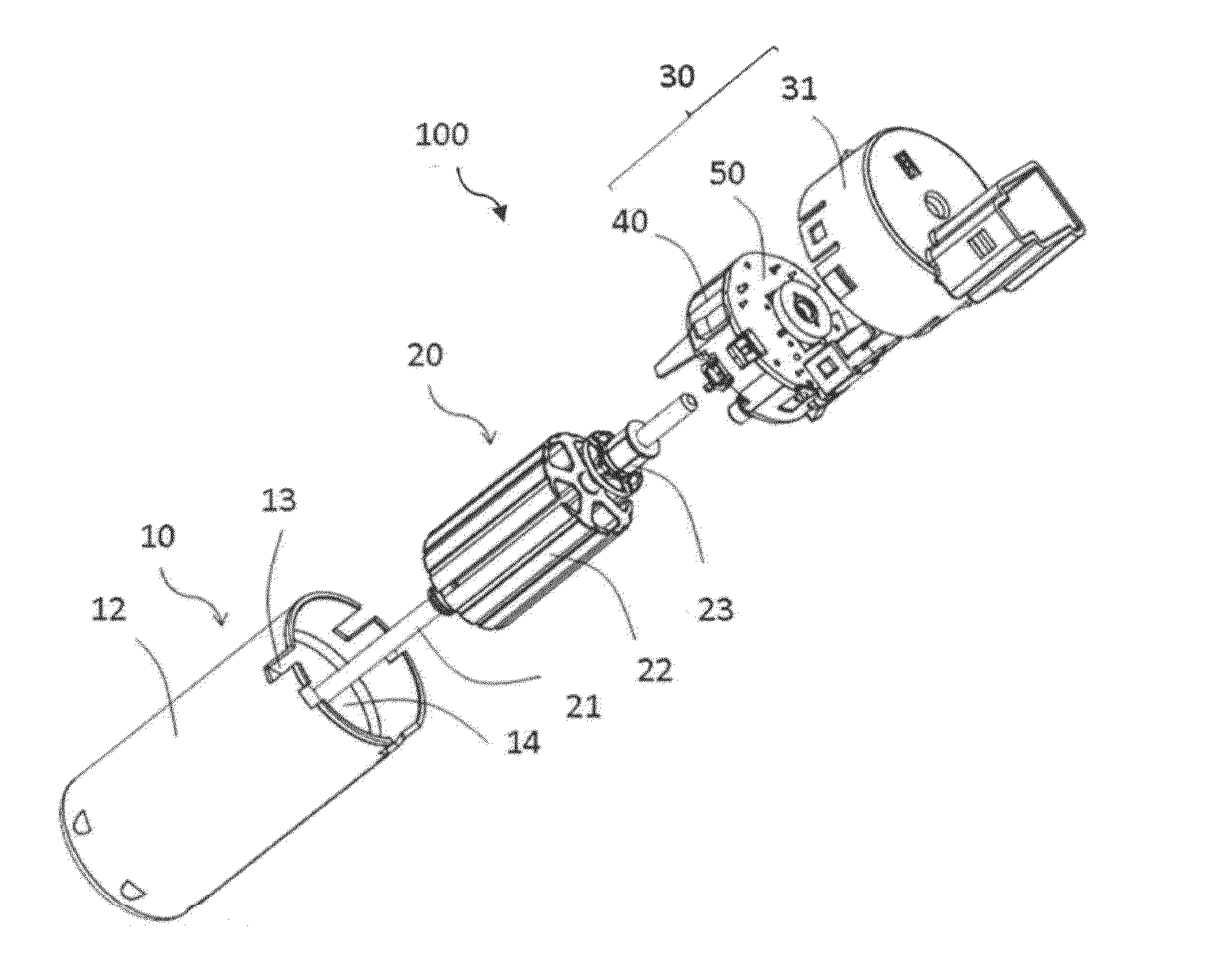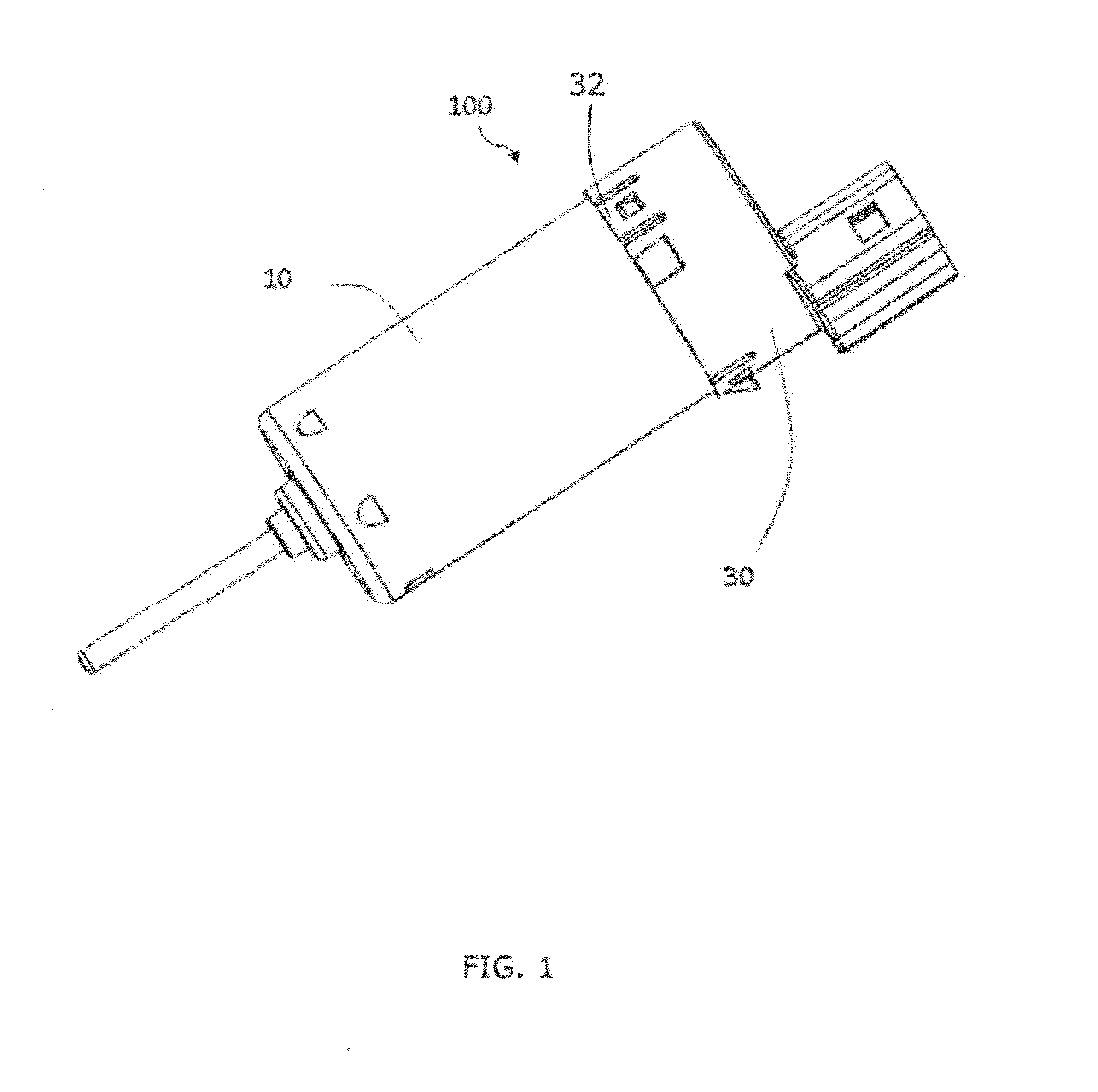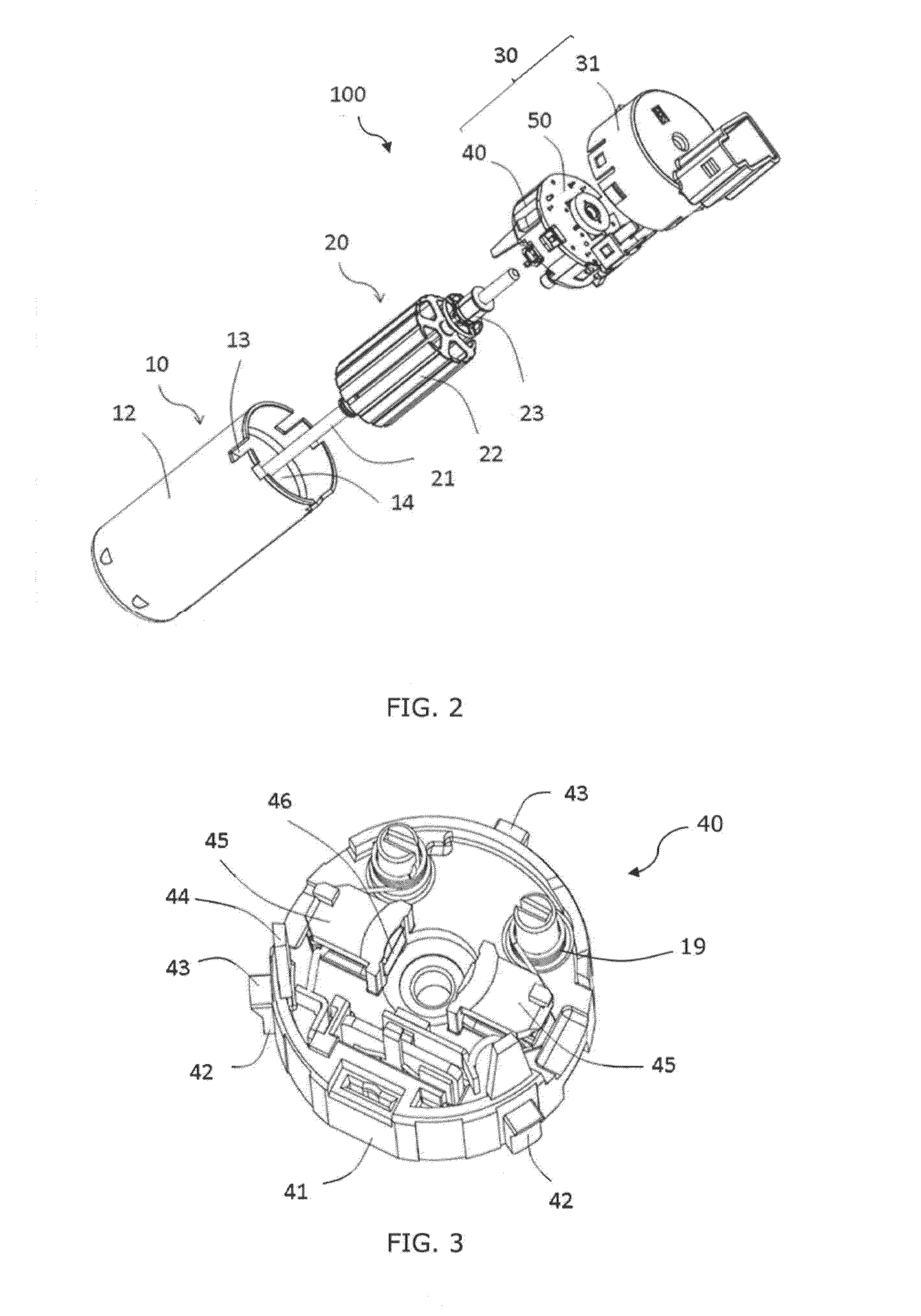Motor and End Cap Assembly Thereof
a technology of end cap and motor, which is applied in the direction of dynamo-electric machines, rotary current collectors, electrical apparatus, etc., can solve the problems of electrical interference with neighboring electronic equipment, and achieve the effect of suppressing
- Summary
- Abstract
- Description
- Claims
- Application Information
AI Technical Summary
Benefits of technology
Problems solved by technology
Method used
Image
Examples
first embodiment
[0035]Referring to FIGS. 1 and 2, a motor 100 provided by present invention comprises a stator 10, a rotor 20 and an end cap assembly 30. The stator 10 comprises a housing 12 and a magnet 14 attached to an inner wall of the housing 12. The housing 12 has an open end. A plurality of positioning slots 13 is defined in a circumferential periphery of the open end of the housing 12.
[0036]The rotor 20 comprises a shaft 21, a rotor core 22 and a commutator 23 both fixed to the shaft 21, and a rotor winding comprising a number of coils (not shown) wound on the core 22 and electrically connected to segments of the commutator 23.
[0037]The end cap assembly 30 comprises an end cap 31, and a brush assembly 40 and a circuit board 50 both received in the end cap 31. The circuit board 50 is fixed at one side of the brush assembly 40. Latches 32 are defined in the circumferential wall of the end cap 31.
[0038]Referring to FIGS. 3, 4 and 5, the brush assembly 40 comprises an insulating bracket 41. The...
second embodiment
[0047]FIG. 9 shows a motor 80 provided by the present invention. The motor 80 comprises a stator 81, a rotor 82 (see FIG. 12) and an end cap assembly 83. The housing 84 of the stator 81 has an open end into which the end cap assembly 83 is inserted. A cover or end cap, forming a part of the end cap assembly has been omitted to show the inner parts of the end cap assembly more clearly.
[0048]Also referring to FIGS. 10, 11 and 12, the inner face of the end cap assembly 83 has two brush cages 85 each for receiving a brush 86 therein. The brushes 86 are in sliding contact with the commutator of the rotor 82. In the present embodiment, the brush cages 85 are made of a metal material. Therefore, once the high frequency electromagnetic radiation generated by the brushes 86 rotating relative to the commutator of the rotor 82 are coupled to the brush cages 85, the brush cares 85 become transmitting antennas that transmit the high frequency interference signals outwards. To avoid this situatio...
PUM
 Login to View More
Login to View More Abstract
Description
Claims
Application Information
 Login to View More
Login to View More - R&D
- Intellectual Property
- Life Sciences
- Materials
- Tech Scout
- Unparalleled Data Quality
- Higher Quality Content
- 60% Fewer Hallucinations
Browse by: Latest US Patents, China's latest patents, Technical Efficacy Thesaurus, Application Domain, Technology Topic, Popular Technical Reports.
© 2025 PatSnap. All rights reserved.Legal|Privacy policy|Modern Slavery Act Transparency Statement|Sitemap|About US| Contact US: help@patsnap.com



